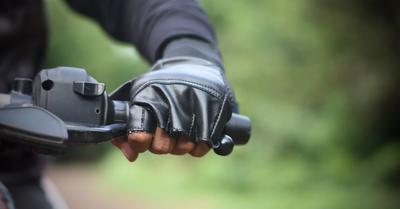How To Clean a Motorcycle Helmet?
Your motorcycle helmet is a pretty expensive piece of gear. Top-end helmets get pricey, but even budget-minded offerings cost several hundred dollars. If I’m spending that kind of cash on something, I want to keep it clean and looking new.
That can be pretty hard for a motorcycle helmet since they are subjected to all kinds of weather conditions, road debris, and the inevitable splattering of bugs. There are a few simple steps to keep your helmet looking shiny and new.
Follow the steps below to clean your motorcycle helmet inside and out thoroughly.
Step 1: Assemble Your Supplies
As I stated above, your motorcycle is an expensive piece of gear. The supplies needed to clean it are not so much, but selecting the right cleaning supplies is essential to ensure you’re not damaging the finish or irritating your skin.
The supplies you’ll need to clean your helmet include your helmet (obviously), some gentle non-petroleum-based soap (many people recommend baby shampoo), a few microfiber towels, warm water, and a small brush.
Whether you have a top-of-the-line Arai helmet or a more budget-friendly offering like my Icon Airflite, the supplies you need to clean them stay the same.
The gentle soap gets the helmet nice and clean, but you can be confident that there are no harsh chemicals that are going to damage the helmet’s finish or irritate your skin. You also want to use warm water instead of hot water to ensure that you aren’t damaging any of the helmet’s materials.
A clean microfiber towel will allow you to clean your helmet without worrying about scratching the finish. The critical thing to remember here is that as you clean your helmet, be mindful of dirt and debris trapped on the towel, as that can scratch the surface.
Step 2: Disassemble Your Helmet
When I say disassemble your helmet, I’m not talking about completely taking it apart. Still, you will want to remove any electronics and accessories and the inside lining.
If your helmet is equipped with a communicator or speakers, you will need to remove them. Likewise, if you have a visor or any other attached accessories, remove them now to make cleaning the helmet easier. You will also remove your faceshield and the interior lining in this step.
Depending on the kind of helmet you have, removing the faceshield and interior lining may be different for you, but for my helmet, removing the faceshield was as easy as removing the covers and sliding it backward. I’ve had other helmets where you must hold a latch and pop the faceshield out on either side. When in doubt, refer to your helmet manufacturer’s instructions.
The interior lining for most helmets is secured with a few snaps that pop right off. While removing the lining, be mindful of how and where it attaches so that you know exactly how it goes when you put it back together later. Once again, if you get it apart and can’t put it back together, I’ve always been able to find those details from the manufacturer.
Step 3: Clean the Exterior of Your Helmet
Depending on how dirty your helmet is and how long it’s been since you last cleaned it, this step may take longer or shorter for you. I like to clean my helmet regularly and after any riding where it’s gotten especially dirty.
A helpful trick I’ve learned is to soak one of my towels in warm water and layer it on the outside of the helmet. Doing so allows it to soak a little and loosen up any especially tough dirt. After the helmet has soaked for a while, use your towel to wipe away any dirt gently. All you should need to get the outside of the helmet looking clean is warm water, but if you have any stubborn areas, apply a small amount of your gentle soap and scrub clean.
Here you can use your small brush to clean any vents or fine channels where dirt might collect. A toothbrush works perfectly for this application or any small detailing brush. You may also need a q-tip to get into some of the smaller vents or channels.
Step 4: Clean the Interior Lining of Your Helmet
Without a doubt, this is the part of your helmet that requires the most attention. Conversely, it is probably the part of the helmet you think the least about cleaning. If you’re like me, you have probably neglected this area a time or two, but if you think about it, this is the part of the helmet that gets the dirtiest.
The interior lining of your helmet is constantly in contact with your head. On hot days it absorbs your sweat, and it’s constantly collecting grease and dirt from your hair, not to mention all the fine dirt particulates that come in through the air vents.
To clean the interior lining, just fill a bucket or your sink with warm water and baby shampoo. With your water prepared, dunk and soak the lining in your water. For this step, you’ll want to scrub them to work out any soaked-in grime.
You don’t need to be incredibly gentle with your helmet’s liner. Just be mindful not to be too rough and damage the liner. With your liner nice and clean, take them out and rinse them off, then set them aside to dry.
Thoroughly drying your helmet liner is essential so allow them to fully air-dry before installing them back on the helmet. You don’t want to trap moisture in your helmet, and the feeling of wet cheek pads against your face is extremely unpleasant. Resist the temptation to try and dry them in your laundry or hair dryer, as the high heat can damage them.
Step 5: Clean Your Helmet’s Faceshield
Modern motorcycle helmets have faceshields with protective coatings on them. Usually, these coatings help to block UV radiation or are anti-fogging. For this reason, when cleaning your faceshield, you want to follow your manufacturer’s recommendations.
For most faceshields, they can be cleaned with just warm water the same way you cleaned the exterior. Bug debris can be especially hard to clean off and may require extra time soaking with a warm towel. Avoid using chemical cleaners on your faceshield to ensure you aren’t degrading any protective coatings.














